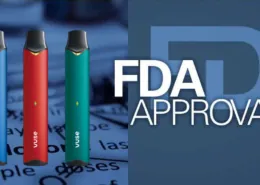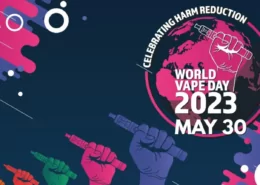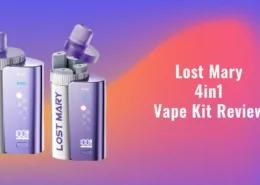Evolution of FDA Vaping Regulations: A Chronological Analysis
The Food and Drug Administration’s regulatory authority over vaping products originated with the Family Smoking Prevention and Tobacco Control Act in 2009. In the decade-plus since, FDA oversight of vaping devices and e-liquids has followed a winding, highly contentious path.
This comprehensive article chronicles the major events, stakeholders, and forces shaping FDA vaping policies over the years. From initial assertions of jurisdiction to ongoing debates around safety and youth usage, we survey the nuances underpinning this complex public health challenge requiring careful balancing of potential benefits and risks.
The Origins: FDA Asserts Tobacco Regulatory Powers Through the Tobacco Control Act
In June 2009, President Obama signed into law the Family Smoking Prevention and Tobacco Control Act (TCA). This bipartisan legislation granted the Food and Drug Administration regulatory authority over manufactured tobacco products like cigarettes, smokeless tobacco, and roll-your-own tobacco.
Specifically, the TCA empowered the FDA to set standards controlling the manufacture, sale, labeling, and marketing of tobacco products. It established the FDA Center for Tobacco Products (CTP) as a specialized office to develop and enforce regulations on the tobacco industry.
The act imposed a number of immediate sales and marketing restrictions on regulated tobacco products. This included banning flavor additives (except menthol) in cigarettes, prohibiting branding sponsorships of events, and forbidding free samples.
Most impactfully, it required newly introduced tobacco products to undergo an expensive and burdensome premarket review process demonstrating appropriateness for public health before reaching the market. However, the law exempted or “grandfathered” existing brand-name tobacco products at the time from this process.
This grandfather provision largely shielded major tobacco companies by preventing competitors, whether novel tobacco products or less hazardous alternatives like vaping, from threatening market share occupied by entrenched brands like Marlboro. Due to these extensive protections for major cigarette makers, some labeled the legislation the “Marlboro Protection Act.”
However, the TCA contained one additional provision that would later prove momentous in subjecting emerging vaping products to the FDA’s authority – the deeming clause.
The Deeming Clause Sets the Stage for Asserting FDA Vaping Oversight
The central purpose of the TCA was asserting FDA regulatory powers over the manufacture, marketing, and sales of finished tobacco products. But a supplemental provision granted the agency sweeping authority to expand its own jurisdiction through “deeming.”
Specifically, the law empowered the FDA to decree regulatory authority over other tobacco-derived products not explicitly named in the TCA by deeming them subject to oversight.
This allowed the FDA discretion to designate new tobacco product categories like vaping devices, e-liquids, cigars, hookah, and others for regulation without requiring additional legislation from Congress. It could effectively expand its own regulatory ambit through agency rulemaking.
The deeming clause laid the legal foundation enabling the FDA to eventually assert regulatory jurisdiction over vaping products without lawmakers having to update the TCA. But exercising this power would wait several more years.
Early Skirmishes: The FDA Asserts Vaping Oversight Through Pharmaceutical Regulation
When the TCA became law in 2009, the modern vaping industry remained in its infancy in the United States. That same year, the FDA made initial attempts to assert authority over these emerging devices, but through an unexpected channel – pharmaceutical regulation.
Rather than regulating vaping products as tobacco items or invoking deeming powers, the FDA Center for Drug Evaluation and Research (CDER) took aim at vaping devices.
CDER oversees pharmaceutical therapies like medications and some medical devices. Officials directed customs agents to begin detaining and denying entry to e-cigarette imports arriving from China.
The FDA argued these products constituted unapproved medical devices for administering nicotine and making smoking cessation or reduced harm claims. This framed vaping devices as drug delivery mechanisms requiring FDA drug approval, rather than tobacco offerings falling under CTP’s jurisdiction.
In response, two vaping companies – Smoking Everywhere and Sottera (which later became NJOY) – filed a legal challenge disputing this characterization in April 2009. In Smoking Everywhere vs. FDA and Sottera vs. FDA, the companies asserted vaping products did not meet the definition of medical devices.
In January 2010, Judge Richard Leon of the U.S. District Court for the District of Columbia ruled in favor of the vaping firms. He affirmed FDA drug authorization did not apply to e-cigarettes not marketed for therapeutic purposes.
Leon invoked the agency’s tobacco product authorities, stating the FDA could regulate vaping devices under those powers. But the agency had not yet invoked deeming to assert such jurisdiction when the case was decided.
In December 2010, the U.S. Court of Appeals upheld Judge Leon’s ruling. With this defeat, the FDA conceded it could not subject vaping products to drug device regulations reserved for therapies making medical claims.
Following this judicial rebuke, the agency acknowledged it could only regulate vaping products under its tobacco product authorities. But formally asserting those powers via deeming remained years away.
FDA Tobacco Center Begins Asserting Its Regulatory Role
Faced with court decisions affirming it lacked pharmaceutical regulatory standing over vaping products, the FDA Center for Tobacco Products (CTP) began staking its jurisdiction.
In April 2011, the agency officially abandoned its drug enforcement strategy regarding vaping devices. After years pursuing the wrong path, CTP announced plans to regulate e-cigarettes under its tobacco oversight powers going forward.
However, the center stopped short of invoking formal “deeming rules” to immediately bring vaping products under CTP’s umbrella. At the time, the exploding young industry remained relatively small-scale amidst regulatory uncertainty.
But calls for FDA oversight escalated as vaping grew exponentially in popularity over succeeding years without formal regulations in place. Congress, health advocates, and competing tobacco interests placed immense pressure on CTP to take decisive action.
Opponents Aim to Force the FDA’s Hand Through Proposed “Deeming Regulations”
Despite CTP tentatively asserting it planned to regulate vaping products, by 2013 it had failed to take concrete steps to do so like issuing deeming rules or enforcing registration requirements on manufacturers.
This regulatory vacuum persisted even as vaping exploded from a niche to a multibillion-dollar market over a few short years. However, parties viewing the disruptive vaping industry as an existential threat intensified demands for urgent FDA intervention.
Anti-tobacco groups like the Campaign for Tobacco-Free Kids lambasted the lack of oversight, highlighting flavors like gummy bear and cotton candy ostensibly aimed at kids. They warned of a youth vaping epidemic developing.
Powerful Congressional Democrats wrote letters and publicly decried FDA inaction. They accused the agency of abdicating its statutory duty to regulate newly emerging tobacco products for public health under the Tobacco Control Act.
Rival tobacco corporations also lobbied for vaping regulation, framing the need in terms of responsible oversight. Regulations mirroring those imposed on combustible tobacco could handicap future upstart competitors to traditional cigarettes.
Facing mounting criticism, CTP confronted increasing pressure to formalize its vaping oversight through deeming or face potential legislative mandates compelling it into action.
FDA Unveils Proposed Deeming Regulations to Assert Vaping Oversight
In April 2014, the FDA Center for Tobacco Products finally unveiled its long-awaited proposed rule to begin regulating vaping products. The draft regulations became instantly known as the “Deeming Rule.”
Through these proposed rules, the FDA planned to invoke its discretionary power under the TCA to deem additional products meeting the statutory definition of “tobacco product” subject to its regulatory jurisdiction.
E-cigarettes, e-liquids, vape pens, and related devices alongside other products like certain cigars qualified for this expanded authority. Once deemed, these newly categorized tobacco products faced extensive regulations like prior approvals for new products.
Most impactfully, the Deeming Rule called for vaping manufacturers to submit costly and burdensome Premarket Tobacco Product Applications (PMTAs) for existing products already on the market when the rule took effect.
Unlike traditional tobacco products grandfathered without review under the TCA, deemed vaping merchandise faced intense scrutiny threatening market viability. This amounted to an FDA ban by red tape absent strong legislative pushback.
The proposed rule offered concerned parties 75 days to submit comments, which the agency stated it would review before finalizing regulations. But the skeptical vaping industry expected minimal substantive changes from initial drafts regardless of opposition.
Vaping Proponents Voice Vociferous Opposition to Strict Proposed Regulations
The FDA braced for substantial critical feedback on its proposed deeming regulations during the open comment period. Ardent opposition far exceeded expectations, foreshadowing the contentious fight ahead.
Consumer advocates flooded the agency with over 100,000 comments vocalizing support for vaping access and pragmatism regulating reduced harm products. Manufacturers warned of massive industry destruction from unreasonable rules.
Lawmakers like Representative Tom Cole drafted legislation to exempt existing vaping merchandise from retroactive review. Bipartisan bills sought to curtail regulatory overreach by grandfathering thousands of small businesses, though gaining little traction.
Some comments highlighted harms from prohibitive measures like fueling illicit markets. Others decried favoring moribund incumbents over disruptive innovations advancing public health. A minority recommended embracing vaping for harm reduction.
Overall, the proposals drew staunch criticism as de facto bans on life-saving products. But meaningful revisions looked unlikely given the agency’s makeup and ties to activists. The fight was only beginning.
Combustible Tobacco Giant Altria Lends Support to Strict Vaping Regulations
In December 2014, tobacco corporation Altria submitted commentary on the proposed deeming rules that rattled the vaping industry. The maker of Marlboro cigarettes improbably advocated for even more aggressive FDA oversight than initially conceived.
Altria suggested banning open tank vaping systems offering customizable options. The company argued closed-system vape pods with prefilled cartridges, resembling cigarettes, were more easily regulated. This tacitly benefitted Altria exploring closed-system acquisitions.
Even more alarmingly, Altria advocated immediately subjecting vaping components like devices, e-liquids, and parts to burdensome regulations as distinct products rather than unified systems. This followed other recommendations exaggerating burdens on small manufacturers.
Essentially, the tobacco giant encouraged maximizing complexity to ensure only big players with armies of lawyers could ever attain compliance. The vaping industry perceived this as existential threat.
Final Deeming Rule Imposes Stringent Regulations on Vaping Products
In May 2016, the FDA announced the long-anticipated finalized Deeming Rule asserting regulatory authority over vaping products as expected. The extensive 499-page regulations sent shockwaves through the industry.
Effective August 2016, the rule immediately barred introducing new vaping products without FDA marketing authorization. It also empowered the agency to deny or recall existing products at will.
Manufacturers and retailers faced onerous registration requirements and fees akin to highly taxed sin products rather than harm reduction tools. Customers confronted new age verification mandates and more.
Most critically, vaping companies needed to submit costly PMTAs to retain existing products on the market. Unlike traditional tobacco products, no vaping merchandise qualified for grandfathering exemptions from the process.
FDA compliance guidance provided little clarity on approval criteria for manufacturers. Agency rhetoric made clear it expected to drive nearly all vaping products extinct under unrealistic standards.
A court later delayed the initial 2018 PMTA deadline, but the stage was set for years of legal and legislative wrangling over sensibly regulating vaping to balance risks versus benefits.
Congressional Legislation Aims to Blunt Destructive Impacts of the Deeming Rule
Mere weeks after the FDA’s deeming announcement, Congressman Tom Cole introduced HR 2058 seeking to exclude existing vaping products from the retroactive PMTA process. Similar legislation would follow in later sessions.
Cole’s bill aimed to immediately grandfather thousands of products predating the rule, noting the excessive burdens facing small manufacturers compared to entrenched cigarette makers. He emphasized the need to ensure continued availability of reduced harm options.
Meanwhile, Senator Ron Johnson pressed the FDA directly to justify impeding access to safer alternatives helping smokers quit. But his oversight requests yielded little beyond vague talking points from the agency about potential youth risks.
Despite Republican control of the House, Senate, and presidency, Congress passed no comprehensive legislation curbing the FDA’s vaping overreach. Public health arguments failed to overcome well-funded influence campaigns by anti-tobacco groups.
Public Health Groups Drive Regulatory Focus Towards E-Liquid Flavors
Combustible cigarettes with characterizing flavors except menthol were prohibited under the Tobacco Control Act to discourage youth smoking. Anti-tobacco advocates pushed extending this ban to vaping products.
Organizations like the Campaign for Tobacco-Free Kids and Truth Initiative fixated on vaping flavors with names like gummy bear, candy cane, and fruit punch that supposedly attracted adolescents. Some branded these “kid-friendly flavors.”
While the Deeming Rule itself avoided banning flavors, pressure groups kept up steady advocacy. They flooded Congress and the FDA with alarmist letters urging flavor restrictions or removals to curb underage use despite limited evidence of significant impact.
The vaping industry depended heavily on diverse e-liquid flavors driving sales. For activists, attacking flavors through Agency rulemaking offered an effective avenue to undermine vaping’s commercial viability and growth.
Legal Challenges Seek to Overturn Burdensome Vaping Regulations
As soon as the FDA finalized the Deeming Rule in May 2016, vaping trade groups spearheaded lawsuits challenging the punitive regulations on both substantive and procedural grounds.
The Right to be Smoke-Free Coalition lawsuit disputed the extensive compliance costs imposed on companies lacking Big Tobacco resources. It questioned arbitrary date-based grandfathering denying equal treatment.
Nicopure Labs argued the regulations were implemented in an unlawful, arbitrary, and unconstitutional fashion. Other cases focused on technical rulemaking defects.
Unfortunately, courts repeatedly sided with the FDA, upholding the agency’s broad discretion setting tobacco control policies under the Tobacco Control Act. Judges affirmed the Deeming Rule despite protests it would decimate small enterprises to protect cigarette incumbents.
While failing to overturn the regulations themselves, litigation managed to stall initial compliance deadlines through injunctions. This bought the vaping industry time as it pursued longer-term legislative and administrative solutions.
Prospects Improve for Sensible Vaping Policies with Gottlieb Confirmation
In 2017, President Trump shocked activists by appointing physician and former FDA official Scott Gottlieb to head the agency. Gottlieb espoused pragmatism regulating reduced harm products to combat smoking.
Unlike many physicians reflexively dismissive of tobacco harm reduction, Gottlieb’s previous venture capital roles exposed him to promising smoking alternatives. This instilled appreciation for balancing tradeoffs unlike loyalists demanding uncompromising abstinence.
Upon confirmation, he immediately reopened the door to rational vaping oversight focused on transitioning smokers to low-risk options instead of lip service to unattainable prohibitionist ideals. Gottlieb breathed new life into reconciling consumer access and public health.
He held vaping to higher scientific standards as a nascent category with outstanding questions. But his worldview accepted the premise of promoting innovation that could save lives, given cigarettes’ death toll if left unchallenged. For the first time, vaping proponents gained a powerful administration ally.
Commissioner Gottlieb Outlines New Vision for Nicotine Regulation Focused on Harm Minimization
In a seminal July 2017 speech, Commissioner Gottlieb charted a groundbreaking new course to improve public health through tobacco regulation centered on harm minimization.
He announced the FDA would reevaluate onerous requirements preventing introduction of less dangerous products assisting smokers unable to quit cigarettes outright. This represented a dramatic yet rational departure from abstinence-only orthodoxy.
Gottlieb revealed plans to explore mandating limits on combustible cigarette nicotine to non-addictive levels. Recognizing this would compel smokers to seek alternatives, he concurrently expressed support for vaping access fulfilling residual nicotine demand.
Moreover, Gottlieb delayed premarket review compliance deadlines by four years to enable development of meaningful safety and marketing standards collaboratively with manufacturers. He aimed to foster products more aligned with consumer and agency expectations.
Finally, he vowed foundational regulations governing known risks and clarity for industry. The Commissioner’s address marked a watershed moment in balancing tobacco regulation priorities. The vaping industry gained a powerful ally.
Youth Vaping Concerns Prompt Reconsideration of Accommodative Vaping Approach
Barely a year into Gottlieb’s tenure, reports emerged in early 2018 of surging youth vaping centered on startup JUUL’s discreet, high-nicotine pods. Teacher accounts of students vaping surreptitiously in classrooms sparked alarm.
While vaping advocates contested claims of an epidemic given low baseline usage rates, intense political pressure mounted. Anti-tobacco groups seized the moment to reverse growing openness to vaping’s harm reduction potential.
Over ensuing months, scrutiny intensified around JUUL’s early viral social media marketing, high nicotine concentration enabling addiction, and appealing fruit and candy flavors supposedly attracting kids. Scientific evidence lagged but media narratives took hold.
Facing withering criticism for perceived regulatory failures, Gottlieb adopted provocative epidemic terminology in describing teenage vaping. This rhetorical capitulation to shrill reactionary forces would undercut his initial pragmatic vision for empowering safer nicotine alternatives.
The Need for Sensible Vaping Regulations
The long and winding history of FDA vaping regulations has unfortunately seen focus placed on eliminating nicotine vaping rather than thoughtful, risk-proportionate regulation. Hyped concerns over youth vaping and flavors have provided cover for avoiding sensible reforms.
More reasonable oversight could nurture vaping technology as a safer alternative for adult smokers, while preventing youth uptake. The FDA has an opportunity to implement balanced rules that allow adults to access low-risk nicotine options, including flavors, while establishing controls against youth access.
Potential areas for an improved regulatory approach include:
- Implementing quality and safety standards for devices, e-liquids, packaging, labeling and more.
- Requiring child-resistant containers for bottled e-liquid.
- Restricting certain marketing channels to reduce youth vaping exposure.
- Allowing restricted flavor access in licensed adult-only retail environments.
- Taxing vapes at lower rates compared to lethal combustible cigarettes.
- Ongoing scientific evaluation of vaping population health impacts compared to smoking.
With thoughtful fine-tuning, smart and ethical regulations can empower vaping to disrupt cigarette dominance and save lives. But overly burdensome rules could protect the cigarette trade and cause vast public health damage. There is too much at stake for flawed policymaking. Only sensible FDA vaping oversight can redeem its erratic history thus far.
- Mexico Passes Law to Ban Tobacco Ads, Expand Smoke-Free Zones - August 13, 2025
- Big Vape Brands Bypass Ad Bans Via Global Social Media - August 13, 2025
- UK to Make Vape Sellers Pay for E-Waste Disposal - August 13, 2025








